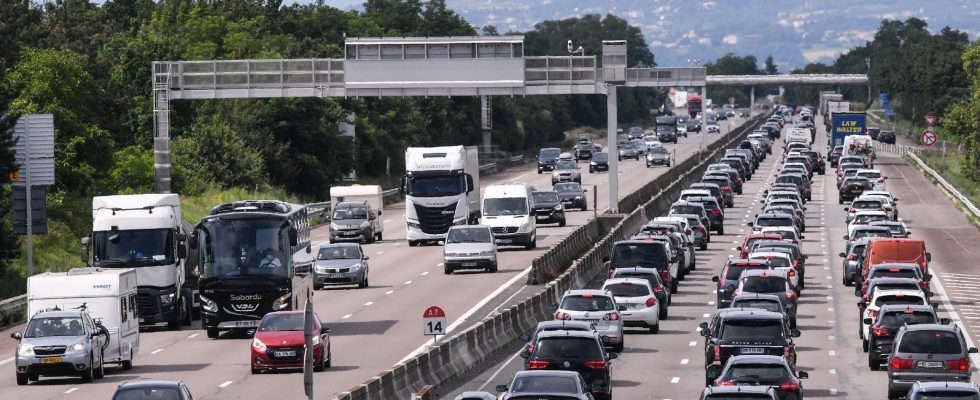The holidays are set, the hotel booked, the suitcases packed… But before enjoying (finally) the holidays, many French people will have to overcome a final obstacle: traffic jams. On this weekend of crossover between “Juilletists” and “Augustians”, the roads will be particularly busy. So much so that this Saturday August 5 should be “the most difficult day of the summer” according to Bison Futé.
In detail: traffic jams will occur mainly in the direction of departures. The A7, A9, A10, A61, A71 and A75 motorways should be avoided. The A43 will also be very congested between Lyon and Chambéry this Saturday. As for this Friday, it is classified “red” at the national level by Bison Futé. But why is it impossible to move forward, when there seems to be no accident on the horizon?
Butterfly Effect
The explanation lies in our individual behaviors. When the traffic is dense, “the slightest disturbance can spread”, explains to L’Express Waleed Mouhali, doctor in fluid mechanics. As soon as a motorist accelerates, brakes or changes lanes, he is likely to cause traffic jams. This is called the butterfly effect. The individual decision trickles down to the rest of the line and the consequences are amplified. “For example, a car that reduces its speed by 10% will encourage the next car to reduce its speed by 20%”, illustrates Waleed Mouhali. And so on…
While individual behaviors are always the cause of traffic jams, their form depends on the environment. “The choices of urbanization, the infrastructures and the number of lanes available can weigh in the balance” and create a more or less favorable breeding ground for traffic jams, indicates Waleed Mouhali. At first glance, one might therefore think that more lanes should be created on the motorways. “But it’s not always a good idea,” warns the teacher-researcher. Instead of splitting between the available lanes, motorists will rush to the fastest lane. This is the Braess paradox. Consequence: traffic jams will not be reduced, quite the contrary.
The best way to avoid traffic jams is therefore to adopt a constant speed. It is in theory copied by other cars via a mimicry effect, and the disturbances are limited. “It’s just like fluids flowing through pipes,” says Waleed Mouhali. “They travel at a constant speed, so it’s very difficult to create a disturbance there.” If, however, traffic jams form, the teacher-researcher advises to respect the safety distances and not to change lanes. Such a decision would produce a new disturbance, which would lead to… traffic jams.
